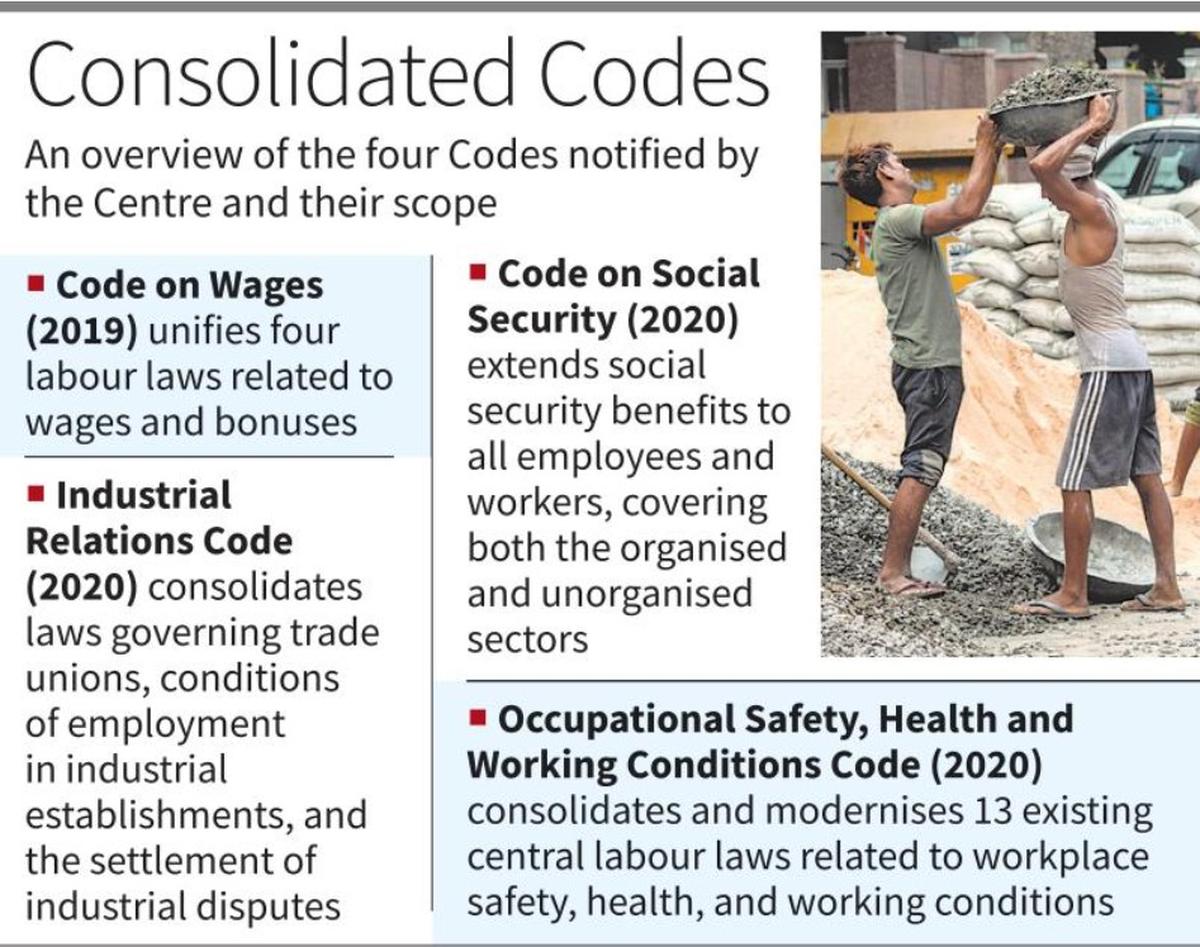Context:
On 21 November 2025, Government of India officially notified and brought into force four consolidated Labour Codes- the Code on Wages, 2019, the Industrial Relations Code, 2020, the Code on Social Security, 2020 and the Occupational Safety, Health and Working Conditions Code, 2020, marking one of the most significant labour‑law overhauls since independence.
Key Features of the Four Labour Codes:
1. Code on Wages (2019)
o Introduces a national floor wage to reduce regional disparities in pay.
o Mandates timely payment of wages, with defined timelines to ensure workers get paid without undue delay.
o Strengthens the definition of “wages” to bring in more components, thereby increasing base pay on which benefits like provident fund or gratuity are calculated.
2. Industrial Relations Code (2020)
o Simplifies dispute resolution through a restructured system of labour tribunals.
o Facilitates collective bargaining but also introduces more flexibility for employers in workforce management.
o Raises the threshold for mandatory government permission for layoffs: earlier, firms needed approval if they had 100+ workers; now, the threshold is 300 employees, giving employers more leeway.

3. Code on Social Security (2020)
o Extends social security coverage widely — including to gig workers, platform workers, fixed-term workers, and workers in unorganised sectors.
o Establishes a Social Security Fund to support welfare schemes for unorganised and gig workers.
o Portability: Contributions and benefits will be more portable across states, helping migrant workers.
o For fixed‑term employees, gratuity eligibility is reduced: they can now get it after one year (instead of a longer period under older laws).
4. Occupational Safety, Health, and Working Conditions (OSHWC) Code (2020)
o Sets national safety standards for workplaces across sectors.
o Requires free annual health check-ups for workers aged above 40.
o Regulates working hours: allows 8-12 hours per day, but caps weekly limit at 48 hours, with overtime paid at double rate.
o Makes single-registration, single-licence, single-return system mandatory for establishments to reduce compliance burden.
o Introduces an inspector‑cum-facilitator model: inspectors will guide and help establishments comply rather than just penalise them.
o Night shifts for women: Women can work at night “with consent and subject to safety measures.”
Conclusion:
The notification of the four new Labour Codes by the Centre is a landmark reform that seeks to reconcile worker welfare with economic dynamism. By consolidating 29 outdated laws into a modern, streamlined labour law framework, the government aims to build a future-ready workforce without stifling business growth.






